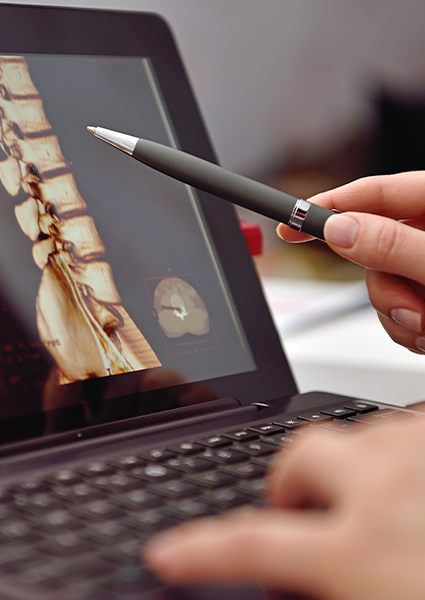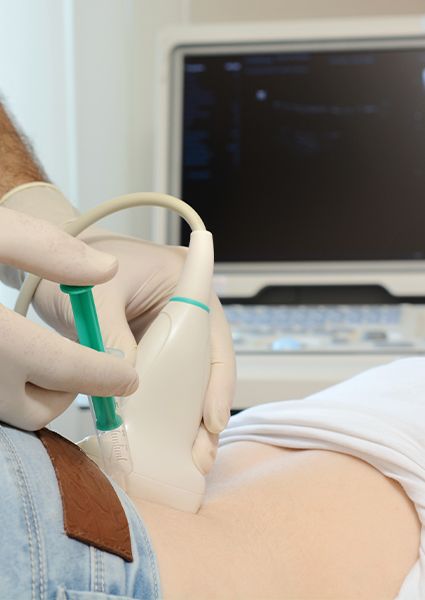Pain Management – Fort Lauderdale, FL
Get Your
Life Back
The Institute of Non-Surgical Orthopedic physicians provide safe and effective pain management options in Fort Lauderdale, FL, including interventional and integrative injections for those patients suffering from chronic back pain, degenerative spinal, and joint conditions. After just a few treatments of injection therapy, most patients report a complete recovery and a remarkable release from back pain.
Why Choose the Institute for Non-Surgical Orthopedics
for Treatment of Pain, Acute & Chronic?
- Trigger Point Injections: Stop Pain at the Source
- Surgery-Free, Medication-Free Solutions for Chronic Pain
- No More Migraines with Fast Botox Treatment
Trigger Point Injections

A trigger point is a very concentrated area of the body where a patient experiences extreme pain and/or sensitivity. A solution, usually consisting of lidocaine or another local anesthetic, can be injected directly into these areas to stop the discomfort and prevent muscle spasms. This not only solves the immediate problem, but by relaxing the area, the body can finally start recovering, meaning the trigger point will eventually go away.
Interventional Spine Injections

The spine is a complicated system consisting of bones, nerves, discs, muscles, and tendons all seamlessly working together. Back pain can stem from any one of these elements being injured, and treating the right part of the body is essential for healing and lasting relief. With interventional spine injections, we can target the exact area that is causing the problem and administer a solution (such as anesthetics, corticosteroids, prolotherapy, PRP, or Whartons Jellytic growth factors) that is designed to jumpstart recovery right where it is needed.
Viscosupplementation

Viscosupplementation involves an injection to reduce joint pain and stiffness. It can be applied to any joint, though FDA approved only for Knee Osteoarthritis. It typically contains a synthetic, viscous, or gel-like substance that acts like normal joint fluid. Essentially, it is providing lubrication for the joint, joint fluid replacement, in order to reduce irritation caused by bone-on-bone contact or cartilage deterioration (which can happen due to osteoarthritis). After one injection series, a patient can experience dramatic relief for 6-18 months, during which other treatments can be used to help heal the joint.
Facet & Epidurals Blocks

Epidurals and facet injections are advanced techniques used for back pain management. Typically, Epidural Steroid Injections involve the use of one of three types of injections: transforaminal, interlaminar, or caudal. These all involve administering corticosteroids into the area over the dura mater, a thick membrane that surrounds and protects the spinal cord using fluoroscopic or ultrasound visualization. These injections have proven successful in addressing a variety of conditions, ranging from disc herniations and sciatica to stenosis and more.
Learn More About Facet & Epidurals Blocks
Radiofrequency Ablation

Radiofrequency Ablation, or RFA, is a method we use as a therapeutic option after successful diagnostic interventional injections. This technique targets the facet joints and medial branch that controls pain sensation in the spine. We actually insert a needle that emits radiofrequency energy, which denatures the nerve. This is much less invasive versus spinal surgery.
Botox for Migraine, Spasticity, and Cervical Dystonia

Botox is a drug made from a toxin produced by the bacterium Clostridium botulinum, which in small doses, can be used to treat many health problems. Here, we use Botox as part of a specific evidence-based protocol for the treatment of chronic migraines, the neurologic condition of dystonia, and muscle spasticity after a stroke or in post-polio syndrome.
Chronic Pain Management

Physicians at the Institute for Non-Surgical Orthopedics are specially trained to treat individuals that have chronic pain. Whether it is multiple physical interventions and injections that we perform or medical management, we will utilize the least invasive and least toxic, as well as, utlilzation of all resources for the smallest medication dose possible.
Radiofrequency Ablation FAQs

You deserve to have as much information as possible about your treatment options, especially if you are unfamiliar with them. Like a lot of back pain sufferers, you probably have tried many solutions already, so RFA might sound really appealing, but you don’t know enough to proceed. We completely understand, which is why we’ve answered some basic questions below.
Am I a good candidate for RFA?
It needs to be emphasized that RFA is NOT a viable option for everyone suffering from low back pain. It is only recommended in cases where the root source is a problem with a nerve in the area rather than a disc, muscle, ligament, tendon, etc. Before your doctor suggests RFA, they will go through a thorough diagnostic process to determine the exact cause of your back pain. If it stems from a nerve, then RFA will be on the table.
It's also important that a patient is healthy enough to undergo RFA, as an active infection, poorly controlled diabetes, blood clotting issues, cardiovascular problems, and previous steroid abuse can lead to complications.
Does RFA hurt?
You will be given an adequate amount of anesthetic during the procedure to ensure you remain comfortable throughout it. Because RFA involves therapeutically damaging tissue (in order to stop the nerve from sending endless pain signals), there may be some slight soreness in the general area afterward, and the patient might feel some discomfort around the treatment area when sitting or standing. Thankfully, these tend to be very mild, go away after a few days, and can be easily managed with over-the-counter medication.
What are the side effects of RFA?
As with any medical procedure, there is a minor chance of side effects, including:
- Mild bruising and bleeding at the injection site
- Leg numbness
- Temporary increase in back pain
- Allergic reaction to the numbing agent
As stated above, any discomfort related to RFA usually doesn’t last very long, around 72 hours. In addition to medication, a patient can alternate the use of hot and cold packs to reduce any swelling or tenderness in the area as well.
How many times will I need to get RFA?
Ideally, a patient will only have to undergo RFA once. That’s because the multistep diagnostic process is designed to help our team be extremely accurate when identifying the source of someone’s pain. From there, the relief should last for several months or even over a year before it is necessary again. If someone’s pain persists after RFA, however, it may be suggested that they undergo the procedure again a few weeks after the initial one. Or, if the patient hasn’t experienced any improvement, the doctor may try another treatment.









